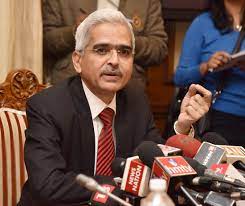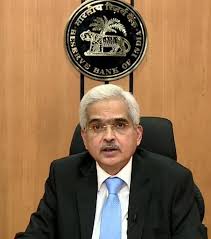Reserve Bank of India Governor Shaktikanta Das has cautioned financial institutions against lending exuberance and asked them to account for risks while pricing their loans.
Das has also urged them to ensure that sectoral and sub-sectoral loan exposures are ‘sustainable’ and stressed on the need for them to further strengthen their asset-liability management.
The RBI Governor also stated that financial institutions should not rely too much on analytics-based lending while partnering fintechs.
Banks, non-banking financial companies (NBFCs) and other financial entities must continue to do stress-testing of their books, Das said.
There may not be any immediate cause for worry at this moment but banks and NBFCs would be well advised to take precautionary measures and spot any trend of risk building early, he said.
Earlier this month, the RBI increased risk weights on consumer loans and loans to NBFCs to slow down unsecured credit growth, after cautioning lenders against risks they could pose in the system.
Speaking at an event organised by Ficci and the Indian Banks’ Association (IBA) on Wednesday, Das said the central bank’s tougher stance on unsecured loans is a “preemptive” move in the interest of sustainability.
According to RBI data, credit card outstanding in September increased 30% year-on-year while other personal loans grew 25% and consumer durables by 11%. The total bank credit growth in comparison was 20% during the same period.
“We have … recently announced a few macro prudential measures in the overall interest of sustainability. These measures are pre-emptive in nature, they are calibrated and targeted,” Das said, addressing the annual FIBAC event.
Das said the RBI has left out loans taken for vehicle and home buying, and also lending to small businesses because of the benefit to growth that such segments portend, and also added that the central bank does not see a possibility of stress building up in such segments.
An area of concern was the sustainability of credit growth. While the system was reporting strong credit growth, Das said banks and NBFCs should ensure that sectoral and sub-sectoral exposures remain “sustainable”. They also need to strengthen their asset liability management, and focus more on their liabilities side, Das said, pointing out that the troubles in the US began because of an assumption that rates will be low for “eternity”, which was completely wrong.
“In certain cases, we have observed increased reliance on high-cost, short-term bulk deposits, while the tenure of the loans, both in retail and corporate loans, is getting elongated," he said.
The second area of concern was the deep interconnectedness of the NBFCs with the banks, which, Das said, called for close attention. The NBFCs are large net borrowers of funds from the banking system. Banks are also key buyers of the debentures and commercial papers issued by the NBFCs. Das asked banks to “constantly evaluate” exposure to NBFCs and the exposure of individual NBFCs to multiple banks.
Warning that concentrated linkages may create a contagion risk, Das asked the non-bank lenders to focus on broad-basing their funding sources and reducing overdependence on bank funding.
The third area is regarding the microfinance institutions (MFIs) who are charging exorbitant interest rates. Das urged the MFIs to judiciously use their freedom to price loans. Since MFIs serve the marginalised clientele, they have to bear in mind the affordability and repayment capacity of borrowers.
“Though the interest rates are deregulated, certain NBFC-MFIs appear to be enjoying relatively higher net interest margins. They are expected to ensure that interest rates are transparent and not usurious," he said.
The fourth cautionary flag was overreliance on the risk models of tech-driven entities under lending collaborations. Collaborations of banks and NBFCs with fintechs enables introduction of innovative products and services. But close attention is required for model-based lending through analytics as it may cause dilution of underwriting standards. Das said lenders need to be careful in relying too much on preset algorithms for lending calls. He asked for routine upgrades in the algorithms which have helped make lending easier.
“We are living in highly uncertain times in an interconnected world. New risks are emerging from time to time, new sources of risk are also coming up in such a scenario. Building further on resilience would be the best insurance against shocks and uncertainties,” Das said.







